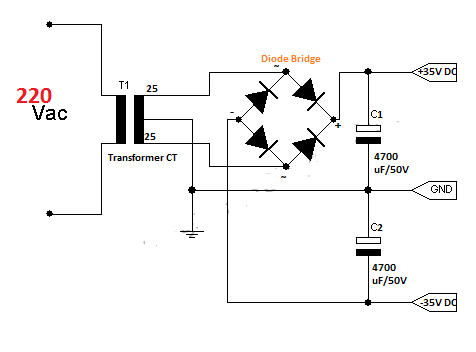The inverter is an electronic circuit that converts DC voltage into AC voltage. The circuit is very useful when the power goes out or the time when we do not have an AC voltage source. Inverter only requires an accumulator to operate. So the advantages of this circuit (inverter) compared with an AC voltage generator that uses fuel to work is the inverter does not cause noise when being operated, does not cause air pollution and easier to carry anywhere.
So, how to make a simple inverter?
-
We must learn the parts of an inverter. The parts of an inverter include: driver stage and power stage. You can see in the image below.
 2. Construct each of the parts of an inverter.
2. Construct each of the parts of an inverter.
Driver stage consists of pulse generator and pulse frequency regulator. We can construct a pulse generator with the IC 555 or other IC that can generate pulses (one of the IC op-amp and IC TTL).
In the pulse generator, set the pulse frequency at 50 to 60 Hz by varying the component or add a potentiometer.
Power amplifier stage consists of current amplifier and step-up voltage. We can construct a current amplifier using a pair of transistors (Darlington transistor) with a reinforcement of the most good. In selecting transistors are used, we must choose a transistor that can work on the current that we use: for example we use a 10A current, we can use a 2N3055 transistor that can operate at currents up to 15A.
In the step up the voltage, if we want to construct a simple inverter, we can use the center-tap transformer with backwards mode to produce the 220 V output. If we want to construct a inverter with power 220 VA then we should know: Pinput = Poutput, where P = V x I, so the output voltage of the inverter circuit is 220 volts and have a current of 1 Ampere.
Pinput = Poutput
V in x I in = V out x I out
12 V x 18,3 A = 220V x 1 Amp
220 W = 220 W
From the above calculation, we need the accumulator 12 V and have a current of about 18 A, we also need a transformer 20A to produce 220VA.
There are Inverter Selection :
 2. Construct each of the parts of an inverter.
2. Construct each of the parts of an inverter.



 14:21
14:21
 Unknown
Unknown










